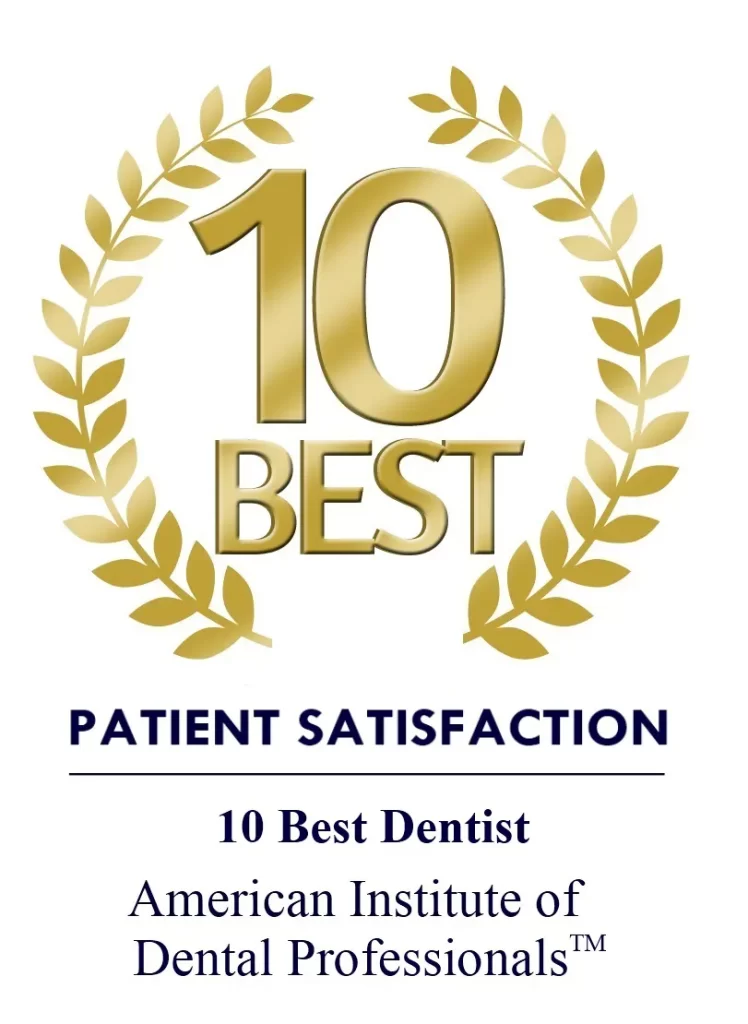According to the American Academy of Periodontology, a periodontist is a “dentist who specializes in the prevention, diagnosis, and treatment of periodontal disease, and in the placement of dental implants”.
What is Periodontal Disease?

Some of the risk factors that contribute to the onset and acceleration of periodontitis include smoking, hormonal changes in women, genetics, medications, and diseases such as diabetes, AIDS, and cancer. Most of the time, gum disease presents in people who have reached their 30s and 40s, however, gingivitis can develop in teenagers.
The National Institute of Dental and Craniofacial Research provided this list of potential gum disease symptoms:
- Bad breath that won’t go away
- Red or swollen gums
- Tender or bleeding gums
- Painful chewing
- Loose teeth
- Sensitive teeth
- Receding gums or longer appearing teeth
Periodontal Services
As experts in treating periodontal disease, periodontists receive up to three additional years of “specialized training in periodontal disease treatment in both non-surgical treatments and periodontal plastic surgery procedures. Periodontists are also experts in replacing missing teeth with dental implants.” The procedures that periodontists perform include:
- Non-Surgical Treatments
- Gum Graft Surgery
- Laser Treatment
- Regenerative Procedures
- Dental Crown Lengthening
- Dental Implants
- Pocket Reduction Procedures
Periodontal Treatment
Non-Surgical Treatments
One of the non-surgical treatment options includes scaling and root planing, a “careful cleaning of the root surfaces to remove plaque and calculus [tartar] from deep periodontal pockets and to smooth the tooth root to remove bacterial toxins.” Another non-surgical service that periodontists provide is tray delivery systems. These FDA approved trays are specially designed to fit inside of the patient’s mouth and serve as the means for delivering medication.
Gum Graft Surgery
When gums recede, they expose the root of the tooth. Gum graft surgery is used to repair and prevent further recession and bone loss.
Laser Treatment
On their website, Colgate offers an article on Laser Periodontal Therapy where they explain that laser gum treatment is used by dental professionals to “access and remove the inflamed gum tissue from around the root of the tooth”. Once the infected tissue is removed they begin root scaling, and then they smooth the root to prevent future bacteria and allow this area to heal and regenerate. This is often contrasted with traditional gum surgery, which utilizes a scalpel and sutures. The dental professional uses the scalpel to pull the gums back, clean out the pocket and work to reduce the pocket depth by cutting tissue. The LANAP® (Laser Assisted New Attachment Procedure) protocol is often offered to patients as a less painful, less invasive, and more exact option than traditional gum surgery.
LANAP®
The LANAP® protocol is accomplished through the use of the PerioLase® MVP-7™ laser, a dental laser that utilizes digital technology and 7 pulse durations. The PerioLase® MVP-7™ laser is made in the USA and was created by a dentist for the use of other dentists. The ergonomic design allows maximum comfort for the dentist and safety for the patient. The variable pulse durations act as differing lasers within the one tool as they provide select tissue interactions. LANAP® has been cleared by the FDA and it’s one of the most successful protocols for the treatment of gum disease by targeting the source of the inflammation without hurting or removing any healthy gum tissue. Through LAR (Laser Assisted Regeneration), LANAP® promotes bone growth, decreases pocket depth and tooth loss, and prevents the need for surgery or sutures.
LAPIP®
Peri-implantitis is a similar phenomenon to periodontitis but it’s found in dental implants where periodontitis occurs in the gums and natural teeth. Patients experience bone loss around the implant along with inflammation and recession of the gums. The PerioLase® MVP-7™ laser used for LANAP® can also be used for LAPIP®or Laser Assisted Peri-Implantitis Procedure. LAPIP® is a modified form of LANAP® that is used to treat peri-implantitis. Millennial Dental Technologies is responsible for the creation of LAPIP® and describes the protocol as “the only patient-friendly, predictable solution for ailing implants.”
Regenerative Procedures
The American Academy of Periodontology refers to these as “procedures that regenerate lost bone and tissue supporting your teeth (that) can reverse some of the damage caused by periodontal disease.”
Dental Crown Lengthening
Some patients visit the periodontist to inquire about procedures that will improve their smiles when they feel that they have more gums than teeth. Although the teeth may be the proper length, they appear to be covered with too much gum tissue. As a corrective measure, the periodontist will perform a dental crown lengthening procedure. During this procedure, the gum and bone tissue are “reshaped to expose more of the natural tooth.”
Dental Implants
Dental implants are placed into a patient’s jaw when they have lost one or more teeth to hold a replacement tooth or bridge.
Pocket Reduction Procedures
When patients experience periodontal disease the gums that would normally fit tightly around the teeth loosen to form pockets. The larger these pockets become, the more bacteria can fit into them, and the more degenerative the periodontitis becomes. If the damage becomes too extreme, the patient can experience tooth loss. In order to prevent this, periodontists “fold back the gum tissue and remove the disease-causing bacteria before securing the tissue into place.”
Schedule an appointment with your Forest Hills, NY periodontist by clicking here or contact us on 718.878.4878.

